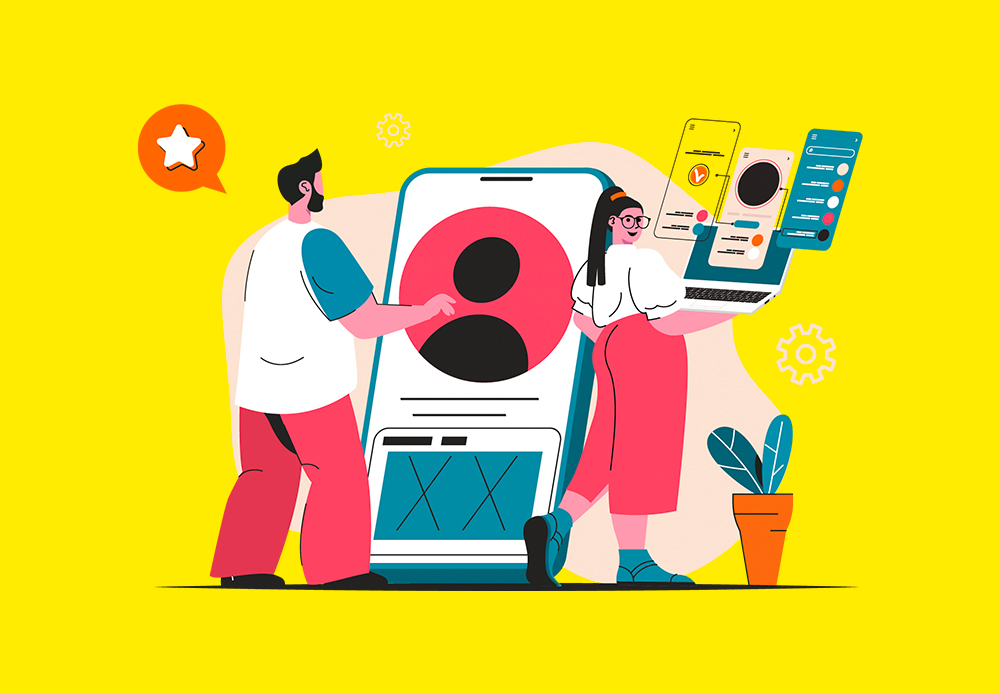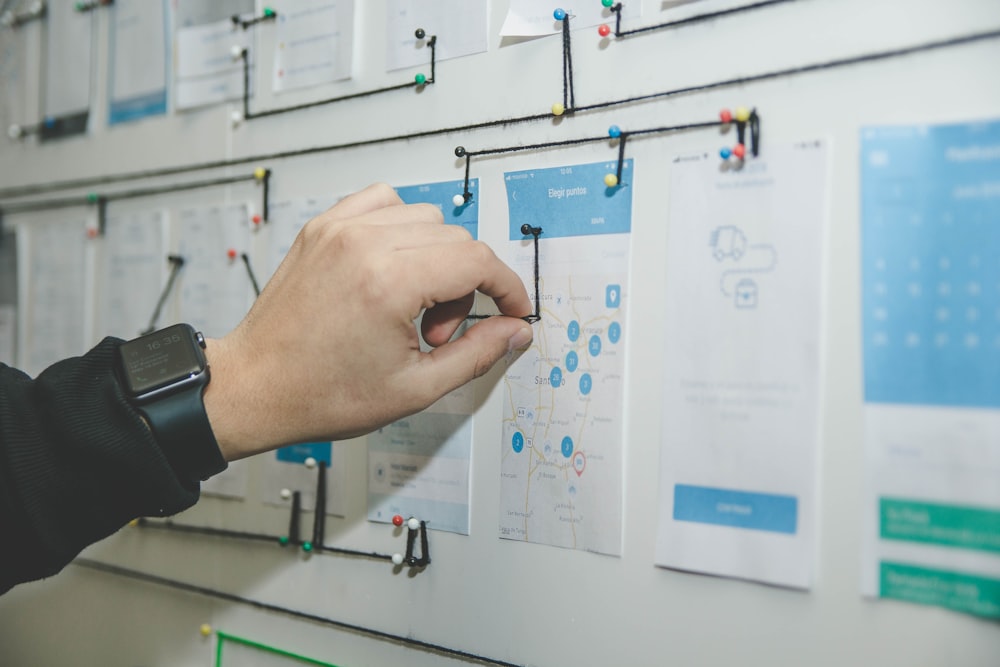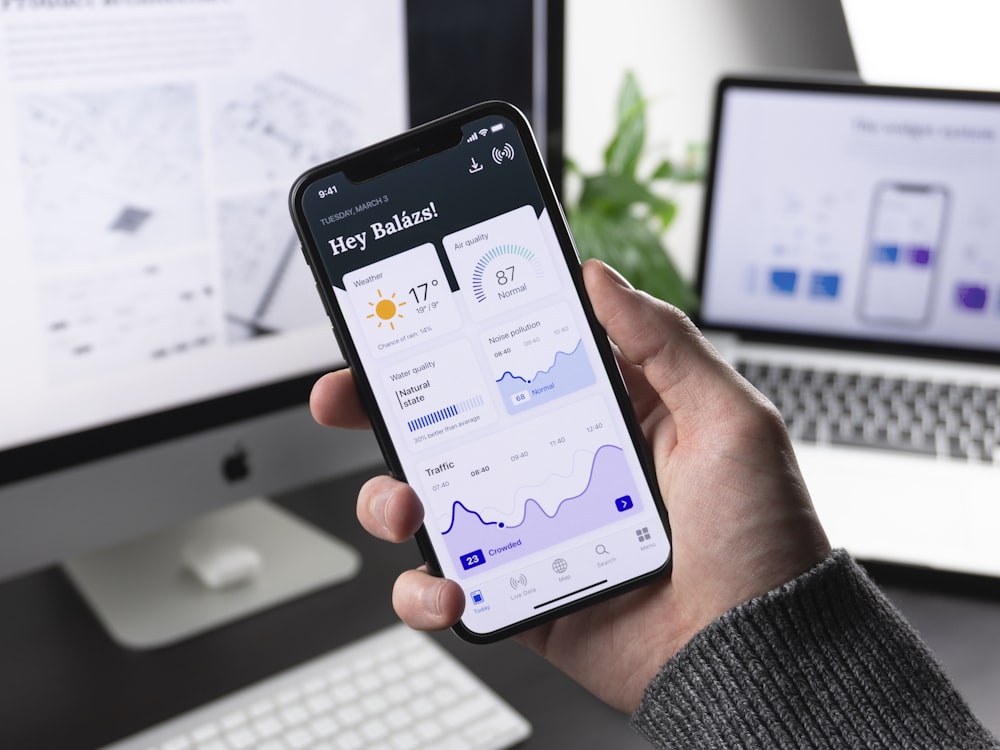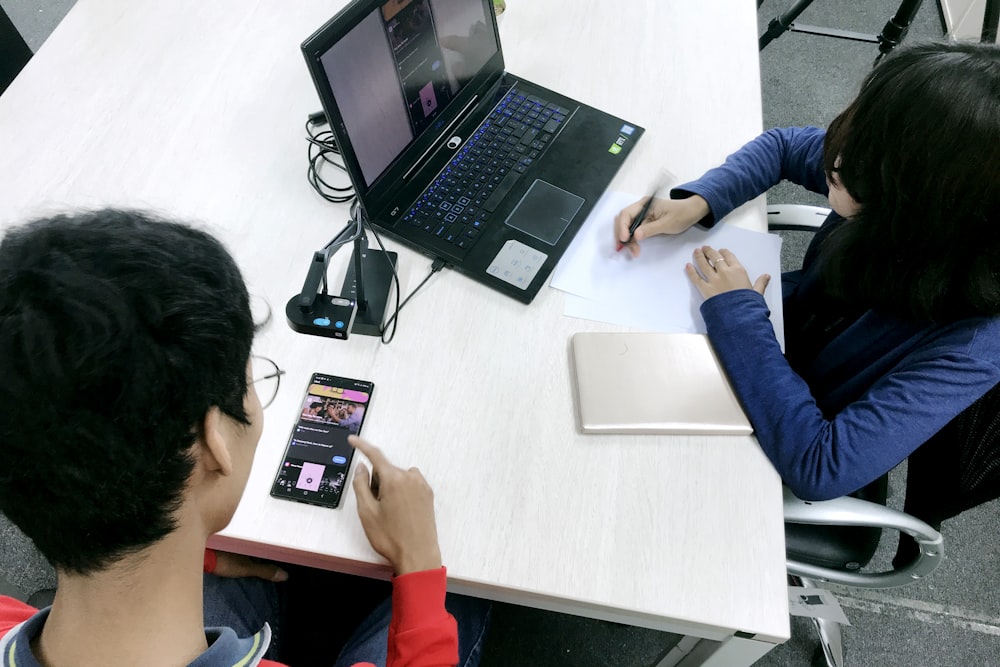How to develop a mobile application? - 9 simple steps to develop your app

Mobile applications create new opportunities for earning, marketing, and interacting with customers. A mobile app can help grow your brand, engage customers, and help you understand your customers' needs.
Although developing a mobile application requires planning, time, and capital, a mobile app is an attractive option for any company.
But how to develop a mobile application? You can, of course, outsource the entire process, but developing the application in-house brings the most flexibility to the app's features, budget, and development schedule.
We will dive into app development tips in this article. Read below the 9 steps you can follow to succeed in planning, developing, and publishing a mobile application.
🐾 9 steps for successful app development
By developing the application yourself, you get exactly the app you want. Although developing a mobile app from start to finish requires a wide range of skills, for example, UX and UI design, project management, and programming, the development process is nevertheless fairly straightforward.
Application development starts with an idea: Do you need a solution to a problem that any other app doesn't solve? Are there apps in your industry that do not meet all customer needs? Do you need visibility for your brand or would you prefer one application to meet several needs?
👉 Read more: What is a mobile application and why your brand will benefit from it?
App development can begin when you have a tested idea of the kind of App you need. Once you are clear on the idea, you can jump into the development process by following the steps below.
👷♀️1. Assemble a team
The first step in developing a mobile app is assembling a team. Successful development of an application requires many different skills, so it is a good idea to gather people with different backgrounds and expertise in the team.
Usually, the team needs at least an application architect, a UI/UX designer, and a project manager.
The application architect defines what functions will be built into the app based on the desired features. A UX/UI designer designs graphics, icons, and animations. The project manager directs the development and the team and ensures that development requirements and schedules are met.
The development of an app also requires a mobile developer to code functions and integrate APIs, and possibly a quality assurance analyst to test the application and ensure that it works smoothly on all devices.
When building your team, contemplate your budget and the areas you need the most help with. Some of the tasks can also be outsourced to freelancers.
👉 Read more: How much does it cost to develop a mobile app?
🔍 2. Do market research
Developing an application is not exactly cheap, so make sure your application is a good fit for the market before starting the development. There are over 2.20 million apps for Apple devices and over 3.40 million Android apps. Make sure there aren't too many similar apps so that your app is more likely to attract users.
Market research also helps to answer the fundamental questions of application development:
Why do customers need your app, and what does it do better than your competitors' apps?
Start by researching your competition. This way, you can determine what others have done right and where they have failed. This will help you assess what customers like and what you should do differently.
Market research can also include interviews with potential users. Interviews provide valuable information about your customers' needs. With that insight, your team can develop features other applications have neglected. It is an immediate advantage over your competitors.
👉 Read more: the 5 most important reasons why your company needs a mobile app
📝 3. Plan the essential features of your app
The design of your app is the key to its success. Market research gives you an idea of what the market is missing and what your target users are looking for; then, the core features of your app are designed based on the needs identified in the research.
The content of the app is the top priority of the design. However, the content should also be easily accessible, the app should be intuitive and easy to use, simple to navigate, and adjustable with personalization options.
For a good user experience, the application must also work smoothly. Also, think about functionality in iOS and Android operating systems, i.e. how your app performs following their basic functionalities.
Remember during the planning phase that the development of the application continues even after its release, and you can always add new features later.
📱4. Create a mockup of the app and its user interface
After the requirements have been gathered and the essential features have been outlined, it's time to design the User Interface (UI). At this stage, the UI/UX designer creates a mockup of what the finished application will look like and how it is supposed to work.
A mockup is a detailed outline of the app's appearance. Typically, a mockup includes images, a basic layout, fonts, etc. The mockup should give the development team a vision of what the app will look like and how it should work.
App development will be straightforward if the mockup is highly detailed. In addition, the mockup can help pitch your idea if you are looking for potential investors to finance your app.
👉 Read more: Mobile app vs website - 10 reasons why a mobile app is a better option
⚠️ 5. Ensure data security
Besides the app’s content, security is the most crucial thing to consider. A privacy breach can cause the loss of users or even hundreds of thousands of euros in fines.
Pay close attention to privacy features and privacy settings during development. The more advanced your application's security protocols are, the better.
Make sure your mobile app is secure:
- Encrypted data: encryption of local database, cache, or API communication.
- Interfaces (API): Make sure that the APIs meet the requirements of the application platform you choose.
- Strong authentication: Management of encryption keys, user session authorization, and tokens.
Test the application continuously for possible security violations to identify potential threats even before the application is published.
👩💻 6. Code the app
Now it's time to start coding. The code has both a front-end and a back-end. The front-end developer codes the user interface of the application, i.e. what the end user sees and interacts with.
Back-end development is about the code running "behind the scenes" that dictates how the app functions. You need coders for both the front- and back-end development or a very talented coder who can do both.
To ensure efficient and flexible coding, you should consider using an agile project management methodology.
Coding is done in a test environment. Aspects related to the testing environment include a database server, user interface, operating system, and network. You can also use an error reporting tool to ensure accurate and detailed test data.
🧪 7. Test the functionality of the app
Quality assurance (QA) is an essential part of developing a successful application.
Quality assurance must be done throughout the development process. This way, you can identify possible errors and improve the application before it is published.
The application must be tested on all operating systems for which it is coded (iOS vs. Android, hybrid, web, or all of these). In addition, compatibility with different operating system versions should be tested (e.g. Android 7.0 vs. Android 10.0).
Furthermore, integration with the functions of the mobile device must be tested carefully. If the application uses, for example, the phone's camera, maps, or location data, does this integration work as intended?
🙋♀️ 8. Collect feedback and make improvements
After rigorous testing, the application must still pass the inspection of a test group before it is published.
It's important that a person unfamiliar with the application tries it out and gives feedback on the user experience. Testing the application with different users gives the development team a better understanding of whether the app meets expectations and whether it fits the needs of different types of users.
Based on the feedback, the development team can still adjust the crucial features of the application to suit different user groups. Further development of the app will also benefit from analytics data, and it is worth collecting as much user data as possible.
✅ 9. Publish the app to app stores
It's finally time to publish the application. Different app stores have different requirements, so look into the store regulations that your app must meet.
Both Google Play (Android) and the App Store (Apple) have their own advantages and disadvantages, but often the best option is to code an app for both iOS and Android operating systems and publish it in both app stores: Developing a cross-platform app ensures the best visibility and the greatest user potential for your app.

Summary
Even though developing a mobile application requires planning, time, and capital, a mobile application is an attractive option for any company.
In-house app development gives you the most flexibility in the app's features, budget, and development schedule.
By developing the application yourself, you get exactly the app you want. Although developing a mobile app from start to finish requires a wide range of skills, for example, UX and UI design, project management, and programming, the development process is nevertheless fairly straightforward:
- 👷♀️Assemble a team
- 🔍 Do market research
- 📝 Plan the essential features of your app
- 📱Create a mockup of the app and its user interface
- ⚠️ Ensure data security
- 👩💻 Code the app
- 🧪 Test the functionality of the app
- 🙋♀️Collect feedback and make improvements
- ✅ Publish the app to app stores
👉 Are you interested in developing a mobile app? Learn more by booking a free appointment with our SuccessGuide
Images: Unsplash ja Giphy












